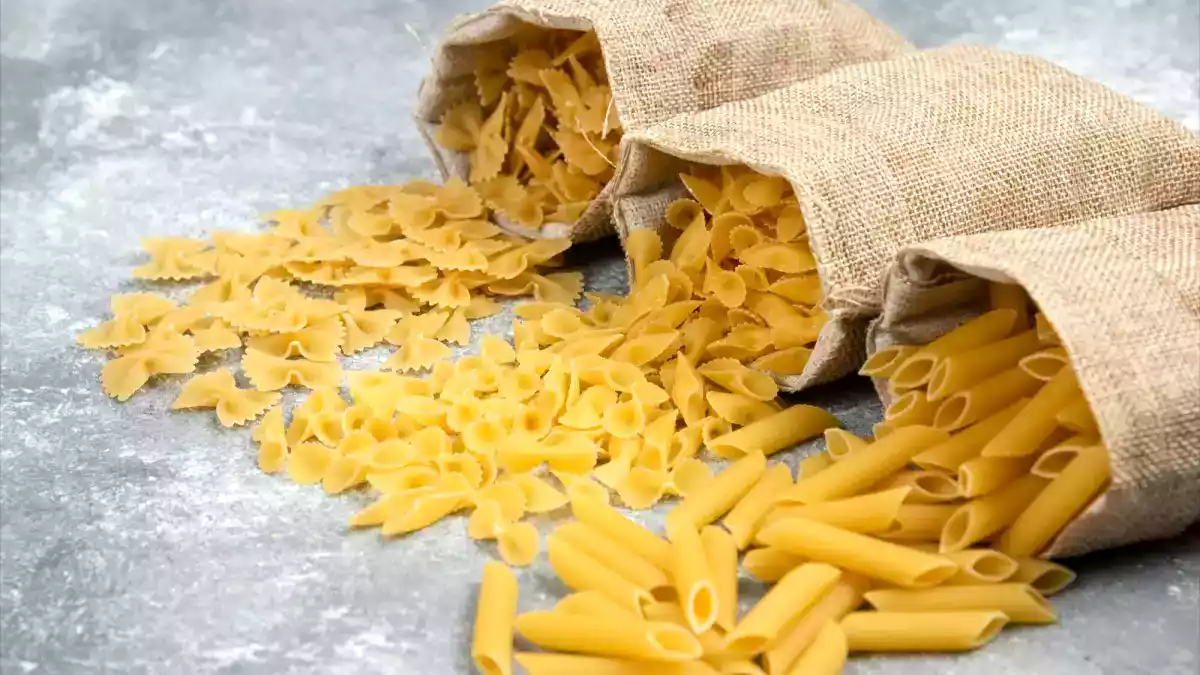Better gluten-free or traditional pasta? Here are the differences!

In recent years, gluten-free pasta has gained increasing popularity, not only among those with celiac disease or gluten sensitivity, but also among those seeking different alternatives to traditional pasta. However, few people really know what the real differences are between regular pasta and gluten-free pasta. In this article we will shed light by comparing ingredients, nutritional values, taste, and benefits, to help you choose the pasta best suited to your needs, without giving up the pleasure of a good dish.
Ingredients comparison: what's the difference between regular pasta and gluten-free pasta?
One of the key aspects in comparing regular and gluten-free pasta is really about the choice of ingredients. Traditional pasta is made from durum wheat semolina, a cereal naturally rich in gluten. This protein, consisting of gliadin e glutenin, is responsible for the typical elasticity and tough texture that characterize the pasta we know. In fact, gluten allows the pasta to hold its shape during cooking and offer that pleasant resistance to the bite that we love so much.
Gluten-free pasta, on the other hand, stems from the need to provide an alternative for those with celiac disease or gluten sensitivity. In this case, wheat is replaced with alternative flours such as:
- Corn
- Rice
- Quinoa
- Buckwheat
These flours, often combined, attempt to replicate the texture and flavor of traditional pasta. However, without the protein network of gluten, achieving an equally elastic and firm dough is a challenge. For this reason, many gluten-free pastas also employ natural thickeners such as guar gum or locust bean gum.
Nutritional values: normal and gluten-free pasta compared
When people talk about gluten-free vs. regular pasta, they often think that the main difference is only about the presence or absence of gluten. However, the nutritional values also deserve attention. Calorie-wise, the differences between regular and gluten-free pasta are minimal: a serving of both provides about 350-370 calories per 100 gr/3.5 oz.
The real gap, however, is seen in the glycemic index. Gluten-free pasta, especially when prepared with refined corn or rice flours, tends to have a higher glycemic index than traditional pasta made from durum wheat semolina. This means that consuming gluten-free pasta can lead to faster glycemic spikes, with possible negative effects on hunger management and metabolic health. In addition, many varieties of gluten-free pasta contain less fiber than traditional whole-wheat pasta.
Taste and texture: pasta tradition vs. innovation
One of the aspects that most distinguishes regular pasta from gluten-free pasta is definitely the texture on the palate. Traditional pasta, made from durum wheat semolina, is characterized by a firm and elastic texture, qualities that result directly from the presence of gluten. This protein is responsible for the "al dente" so beloved by Italians, ensuring a perfect cooking hold and pleasant chewability.
In contrast, gluten-free pasta, lacking this natural protein,tends to have a more fragile structure. If not cooked carefully, it can be crumbly, break easily or take on a chewy texture, making the taste experience less satisfying.
However, it is important to note that the world of gluten-free pasta has made tremendous progress in recent years. Thanks to the introduction of new production technologies and the combination of alternative flours such as rice, corn, quinoa, and buckwheat, the texture of gluten-free pasta has become increasingly similar to that of traditional pasta.
Conclusions
In conclusion, choosing between gluten-free and traditional pasta depends on one's needs. Those without intolerances can continue to enjoy durum wheat pasta, which is rich in taste and texture. Those who need to avoid gluten, on the other hand, today can count on increasingly good and nutritious alternatives. The important thing is to know the differences in order to consciously choose the best pasta for one's daily well-being.
You might also be interested in:
Sources:
Barilla - Gluten-free pasta: characteristics
Schär - Gluten free pasta: ingredients and production
Harvard Health - Gluten-free diets and health risks.
The Food Fact - Comparison of regular and gluten-free pasta
 Daniele Mainieri
Daniele Mainieri

Comments